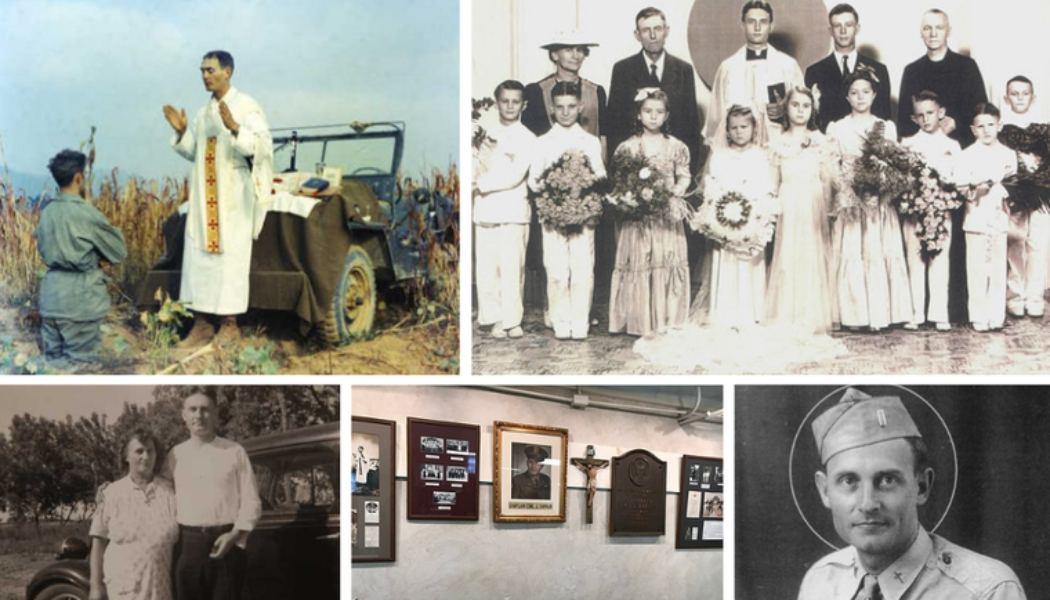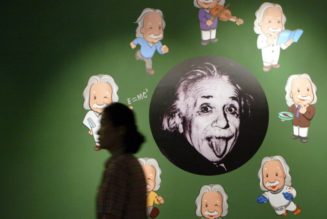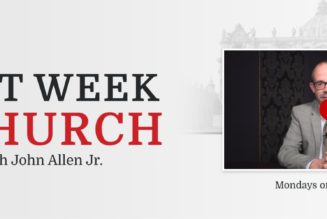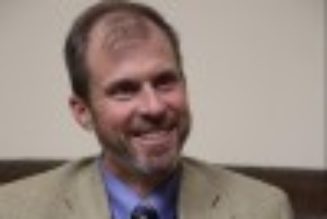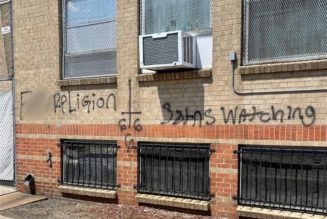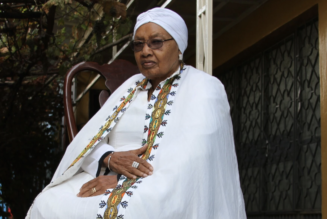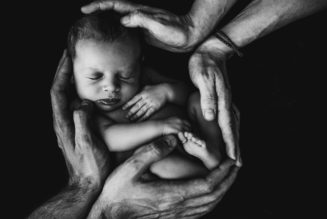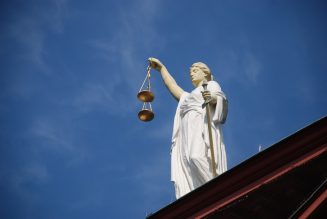
Servant of God Emil Kapaun will be laid to rest Wednesday, 70 years after the U.S. Army chaplain died in a prison camp in North Korea. Reflecting on his life, legacy and his path to sainthood, here are 18 interesting and inspiring facts about this courageous chaplain who offered so much hope amid despair.
1. Affirming the truth that saints can come from anywhere, Emil Joseph Kapaun came into this world on Holy Thursday, April 20, 1916, on a 160-acre farm in rural Pilsen, Kansas. Born into a Catholic family, his parents, Enos and Elizabeth (Hajek) Kapaun, were from the Czech Republic. His experience on a farm proved a useful survival skill during his seven-month stint in a death camp after he was captured as a prisoner of war in 1950.
2. He was baptized as an infant at the newly built St. John Nepomucene Church, just 3 miles from his family farm. The church now welcomes visitors from across the globe anxious to learn more about this chaplain who made his first confession, first Holy Communion, confirmation and celebrated his first Mass serving as the parish priest at the same church. As one historian said, “He was around it and touched everything.”
3. Growing up with his brother, Eugene, Emil was very close to his family and enjoyed his work on the farm. He attended Catholic school, being taught by three Adorer of the Precious Blood of Christ Sisters. Confirmed into the church his first year of high school, he chose St. Joseph as his patron saint. An excerpt of his writings just a few short years later while he was a deacon hint at the impact his upbringing had on his Catholic faith — and St. Joseph’s mark of humility:
“Jesus wished to show that the simple, humble life is very pleasing to God. The will of God was that the Holy Family live a life of poverty and of humble labor. The life of the Holy Family was a simple life; it was marked not by the honors and glamour which the world can give, but it was marked by the peace and holiness from God. The life of the Holy Family was a life of true happiness. In order to have happiness in our Christian families we must practice the virtue of self-sacrifice.”
4. Father Kapaun was ordained as a priest by Bishop Christian Winkelmann in 1940 at St. John’s Chapel on the campus of Sacred Heart College in Wichita, now Newman University. The first Pilsen native ever to be ordained, Father Kapaun celebrated his first Mass at his home parish 11 days later, with more than 1,200 guests in attendance.
5. Father Emil joined the U.S. Army Chaplains Corps just four years later, after serving as an auxiliary chaplain at a neighboring Army airbase. His first assignment was overseas during the tail end of World War II; serving in both Burma and India, he would often travel thousands of miles to meet soldiers in combat. He was promoted to the rank of captain on Jan. 3, 1946.
6. After finishing his service, Father Kapaun went back to school at The Catholic University of America in Washington, D.C., studying education and ultimately earning his master’s. His dissertation was on “A Study of the Accrediting of Religion in the High Schools of the United States.” After completing his degree, he asked Bishop Mark Carroll of Wichita for the chance to serve in the active military again. After two requests, Father Kapaun was finally granted the opportunity and reported to the Anti-Aircraft Artillery Corps at Fort Bliss, Texas, in 1948.
7. Father Kapaun departed for Japan in 1950 to help peace-keeping forces of the 1st Calvary Division meeting the spiritual needs of the troops by offering Mass and hearing confession. Father Kapaun was also known to take part in military maneuvers. The situation changed dramatically when Communist North Korea invaded South Korea on June 25, 1950. Father Kapaun’s unit, the 8th Cavalry Regiment, 1st Cavalry Division was assigned to help South Korea. In a letter to his bishop, Chaplain Kapaun wrote:
“Tomorrow we are going into combat. I have everything in order, all Mass stipends, my will, etc. The way the Catholic soldiers are rallying around the priest is edifying.”
8. Given the gravity of the situation on the ground, Father Kapaun spurred into action, and for four months, he tended to hundreds of dead and wounded soldiers amid extreme heat and torrential rain. Father Kapaun risked his life to offer the sacraments to troops hidden in fox holes, carrying wounded soldiers on his back and burying the dead — from both sides — at the height of the Korean War. He also took time to write personal letters to families of servicemen who had died, to offer loved ones the knowledge that their child or spouse had died with the consolation of the last rites — and with a priest at his side.
9. Brushes of death were extremely common for the chaplain priest. Coming under enemy fire while rescuing his men, he barely escaped a sniper who knocked his tobacco pipe out of his mouth. As archive photos show, Father Kapaun would offer Mass on the hood of Jeep — at one point his vehicle and Mass kit were stolen as he rushed to escape from the enemy, so he made the decision then to always carry the Blessed Sacrament on him, along with sacramental oils and items necessary for Mass to always have them readily available.
10. As winter was setting in, many of the troops thought the war was coming to an end. On All Saints’ Day, Father Kapaun celebrated Mass for his soldiers. U.S. forces on the ground alongside the United Nations had stopped North Korea’s advancement, and most of the troops thought they would be spending Christmas at home with their families. But, overnight, as dawn broke over All Souls’ Day, 20,000 Chinese soldiers swarmed the camp, catching 2,000 American soldiers by surprise while they protected the town of Unsan.
11. Father Kapaun sprang into action, helping to drag those wounded to safety and offering last rites to those dying. He was captured once but escaped when U.S. soldiers returned fire. He carried countless bodies on his back while hearing confessions amid gunfire.
12. Father Kapaun was captured for the second time just before dawn. Hundreds of captured soldiers, now American POWs, began the “death march” to the camp, forcibly walking 87 miles while suffering from frostbite and war wounds. Anyone unable to walk was instantly shot, and Father Kapaun took to carrying those on the ground on his back, asking others with the last bit of strength they could muster to do the same. Because of this, many who would have died made it to Prison Camp No. 5 in Pyoktong, North Korea.
13. It was at Prison Camp 5 that Father Kapaun’s selfless heroism truly shone forth. Employing some of the skills he acquired growing up on a farm, he awoke before dawn every day and, even in negative temperatures, would melt snow for clean water for the men to drink. He created makeshift vessels out of old iron sheeting to have containers available for laundering the clothes of the infirm and wounded. To help those suffering from starvation, Father Kapaun would search around the camp for corn, soybeans, salt and other provisions, always praying to the Good Thief, St. Dismas, before embarking on one of his missions.
14. Father Kapaun was a beacon of hope for all of the soldiers at the prison camp. He not only met physical needs but always worked to nourish the souls of the men, sometimes adapting prayers to reach soldiers of all faiths. Although it was forbidden, Father Kapaun led an Easter Mass for the men in 1951, reminding them of the sufferings that Christ endured for their sake and the new life brought about by the Resurrection.
15. It was just a few short weeks after this service that Father Kapaun fell deathly ill, suffering from a blood clot in his leg and pneumonia. American military doctors who were also captured as prisoners had created a space for him to heal, and those that visited him could tell he must be in great pain, but Father Kapaun never showed any of his suffering. Slipping in and out of consciousness, many soldiers feared he would die. It was mid-May when he started to feel a bit better, but at that point, the prison guards had become aware of his condition. Storming in, they said he had to go to the “hospital,” a euphemism for the camp’s death chambers, as all soldiers quickly learned. His fellow prisoners put up a fight, but Father Kapaun reassured them, saying, “Don’t worry about me. I’m going where I always wanted to go, and when I get there, I’ll say a prayer for all of you.”
16. Near tears, and with some visibly shaking, the soldiers asked to carry Father Kapaun, their beloved chaplain, to the Death House themselves. Holding him up, they were awestruck at the many times Father Kapaun asked them to stop to ask forgiveness from certain guards and then lift his arm to offer a blessing before moving on. On May 23, 1951, just a few short days after his arrival, Chaplain Kapaun died alone in the Death House, exhausted from his years of service to his men and God. He was 35 years young. Surviving POWs tell stories of how his memory lingered, allowing camaraderie and care for others to permeate the camp, and one Jewish prisoner created a crucifix of cherrywood to serve as a reminder of his service, sacrifice and love. That crucifix is now on display at Kapaun Mt. Carmel High School in Wichita.
17. Father Kapaun was declared a “Servant of God” by Pope John Paul II in 1993. With at least two miracles currently under investigation, the canonization process of this compassionate priest continues.
18. Father Kapaun has been awarded several awards posthumously including the Congressional Medal of Honor, the Bronze Star, and the Distinguished Service Cross, among others. When then-President Barack Obama awarded the posthumous medal, he said:
“This is the valor we honor today — an American soldier who didn’t fire a gun, but who wielded the mightiest weapon of all, a love for his brothers so pure that he was willing to die so that they might live. And yet, the incredible story of Father Kapaun does not end there.”
This humble and heroic priest from Kansas is an inspiration to us all.
Servant of God Father Emil Kapaun, pray for us!
To learn more about Servant of God Father Emil Kapaun, please visit here.
Join Our Telegram Group : Salvation & Prosperity
